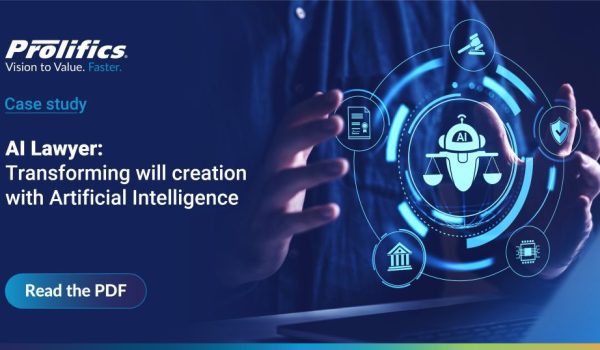What Are Different Types Of API?
APIs (Application Programming Interfaces) come in various forms, tailored to the specific needs of services or applications. API architects have the flexibility to select from a range of protocols and standards when designing new integrations, depending on the nature and purpose of the API. In this blog, we will explore several essential API types and protocols.
Web APIs
Web APIs are accessible through the HTTP protocol, with the API specifying endpoints as well as valid request and response formats. Web APIs encompass a range of services, including online alerts and storage (refer to the list). These web APIs can differ in protection and privacy levels, with various types such as open, internal, and partner APIs. Additionally, it’s possible to combine multiple web APIs to create composite APIs, which consist of sets of data or service APIs.
What is a key benefit of a Web API?
Scalability – One of the most significant advantages of a web API is its ability to rapidly extend and build upon existing platforms. This enables the prompt development of applications. For instance, consider Uber, a prime example of a brand-new business established using Google Maps’ web API.
Open APIs
Open APIs, also known as external or public APIs, are accessible with limited restrictions for developers and other users. They may need an API key to be registered and used, or they can be free. Open APIs are intended for access to data or resources by external users (developers at other businesses, for example).
Check out the UK government’s API, for instance. It’s open to all developers without the need for registration, so app creators can easily incorporate government data on restaurant standards into their apps.
What is a key benefit of an Open API?
Versatility- Allowing developers to leverage existing services and data to create innovative applications. This versatility enables the rapid development of new functionalities and services, fostering a dynamic ecosystem of interconnected applications.
For example, the integration of weather data from a third-party open API can empower your travel app with real-time weather forecasts. Open APIs provide the building blocks for seamless connectivity and expansion across diverse domains.
Did you know: due to the PSD2 and Open Banking initiatives in Europe, banks are required to provide ‘open’ APIs for third-party payment providers? These APIs ensure that specific data is exposed in a highly secure manner, allowing trusted finance applications to ‘pull’ key customer information such as bank balance and payment history.
Internal APIs
Internal APIs are designed to be shielded from external users, unlike open APIs. They are used for sharing resources within a company. They allow the instruments, data and programs of each other to be consumed by various teams or parts of an organisation. There are many benefits of using internal APIs over traditional integration methods, including security and access management, a device access audit trail, and a single interface for linking multiple services.
An example of an internal API in action is when a retailer’s ERP application, like SAP, requests real-time data from its stores, including stock levels, delivery status, and customer information. The API seamlessly facilitates this exchange, enabling the retailer to enhance operational efficiency, gain insights into customer behaviours, and improve forecasting.
What is a key benefit of an Internal API?
Efficiency –to help streamline communication between different software components and services within an organisation. This efficient interaction can significantly improve productivity and workflow.
Partner APIs
Technically, partner APIs are similar to open APIs, but feature limited access, mostly managed by a third-party API gateway. Usually, they are intended for a particular reason, such as offering access to a paid-for service. In an ‘as a service’ ecosystem, this is a very common trend.
An example of a partner API is for one of our clients within the UK government; they were looking to onboard new industry partners without manual intervention. A partner API provided access to their systems, allowing them to outsource more efficiently, saving taxpayer money.
What is a key benefit of an partner API?
Diversification- to enhance a business’ offerings by incorporating complementary services or features from trusted collaborators. This diversification can lead to a more comprehensive and attractive value proposition for customers, opening up new revenue streams and growth opportunities.
Composite APIs
In one call, composite APIs allow developers to reach multiple endpoints. These could be various endpoints of a single API, or they could be multiple sources of services or data. In microservice architectures, composite APIs are particularly helpful, where a user needs information from multiple services to perform a single task. Using composite APIs can decrease server load and increase application performance, as all the data a user requires can be returned by one call.
An example of a composite API is a global e-commerce application like Amazon, which must display product listings, prices, and shipping options. To obtain this information, it needs data from multiple sources, each with its own API. Instead of making separate requests to these APIs, a composite API allows the application to make a single request, streamlining the process. This approach enhances efficiency and provides a smoother shopping experience for users.
What is a key benefit of composite APIs?
Simplification – of the integration process by allowing developers to access data and functionalities from multiple sources through a single, consolidated request. This streamlining of interactions reduces complexity and enhances the efficiency of building applications and services that rely on data from various endpoints, making development more straightforward and user-friendly.
API Architectures and Protocols
The rules for API calls are specified by the API protocol: it defines approved types and commands of data. Various API architectures define various limitations of the protocol.
REST
REST (Representational State Transfer) is a widely adopted web API architecture. To qualify as a REST API, it must adhere to specific architectural constraints or principles, including:
- Client-server architecture: This architecture separates the backend and data storage from the GUI (Graphical User Interface). It promotes versatility, allowing different components to evolve independently.
- Statelessness: REST APIs do not store any client context on the server between requests.
- Cache-ability: Responses can be cached by clients. A REST API response must explicitly state whether or not it can be cached.
- Layered system: REST APIs can interact directly with a server or through intermediaries like load balancers.
JSON-RPC and XML-RPC
JSON-RPC and XML-RPC are remote procedural call protocols. XML-RPC uses XML for encoding its calls, while JSON-RPC uses JSON. These protocols are straightforward, where a call can contain multiple parameters, and only one result is expected. They differ from REST in several ways:
- Intended for calling processes: RPC protocols like JSON-RPC and XML-RPC are designed for invoking processes, while REST deals with resource representations.
- URI usage: In REST, the URI contains information such as query parameters, but in RPC, the URI primarily identifies the server without including parameter details.
SOAP
SOAP (Simple Object Access Protocol) is another established web API protocol. It is designed to be extensible, protocol-neutral (capable of functioning over various communication protocols, including HTTP, SMTP, TCP, and more), and agnostic (allowing any programming type). SOAP encompasses key components like:
- Processing model: Describes how to process a SOAP message.
- Extensibility model: Defines SOAP features and modules.
- Protocol binding rules: Explain how to use SOAP with underlying protocols like HTTP.
- Message construct: Details how to structure a SOAP message.
Prolifics integrates your applications quickly with APIs that provide secure, real-time business information to your employees, customers, partners, and suppliers.
Are you struggling to connect applications such as Salesforce and SAP to your legacy systems? Perhaps you’re looking to onboard new clients or create an Open API for data exposure? Our experts can assist with secure APIs, including product selection and architecture.
Prolifics’ assets, accelerators, and industry patterns shorten your time to value with common components and schemas proven across multiple engagements. Unlock the value of your data, develop your own API ecosystem, and participate in the API economy.
Learn about our integration services, or reach out to our integration and API practice here.








